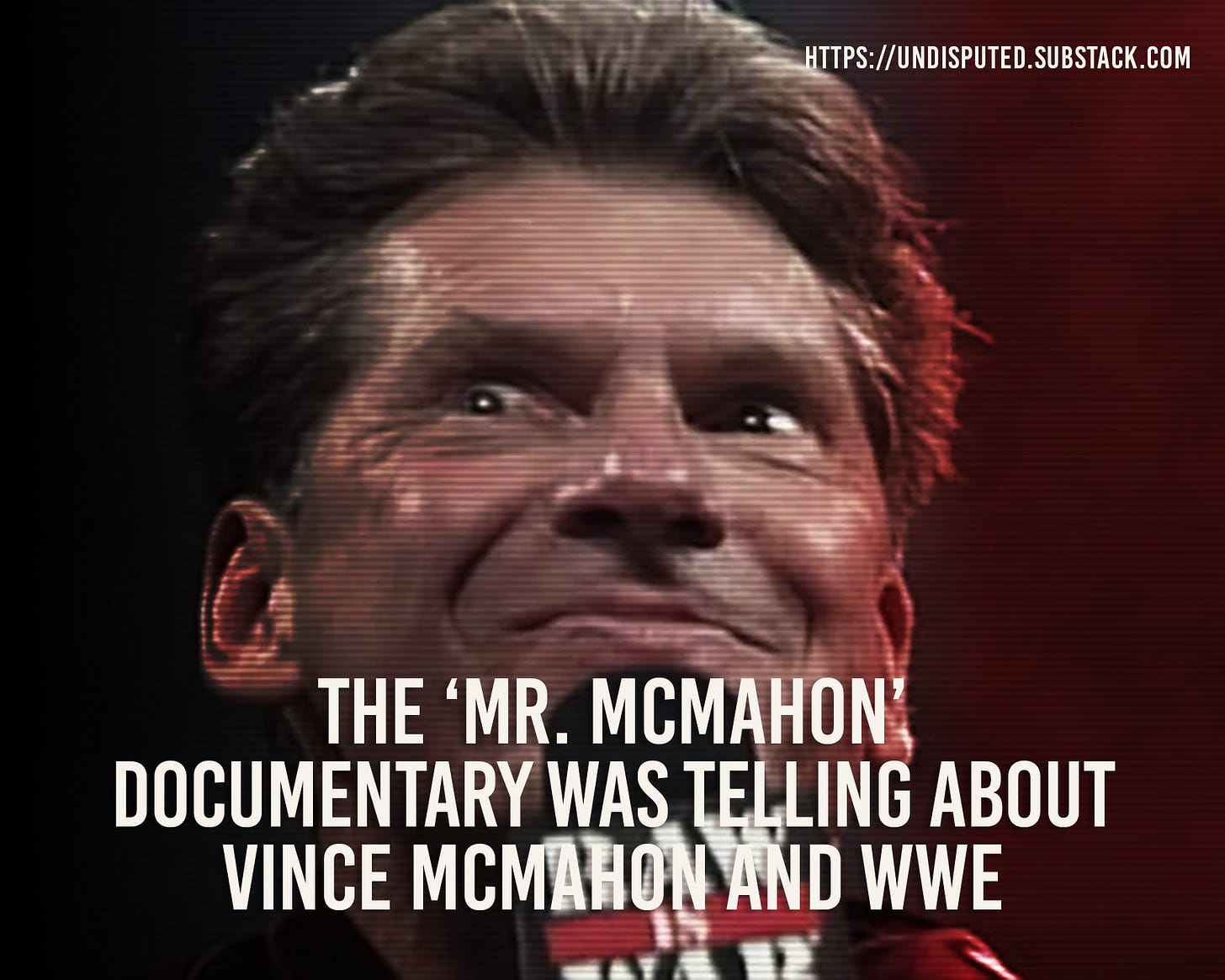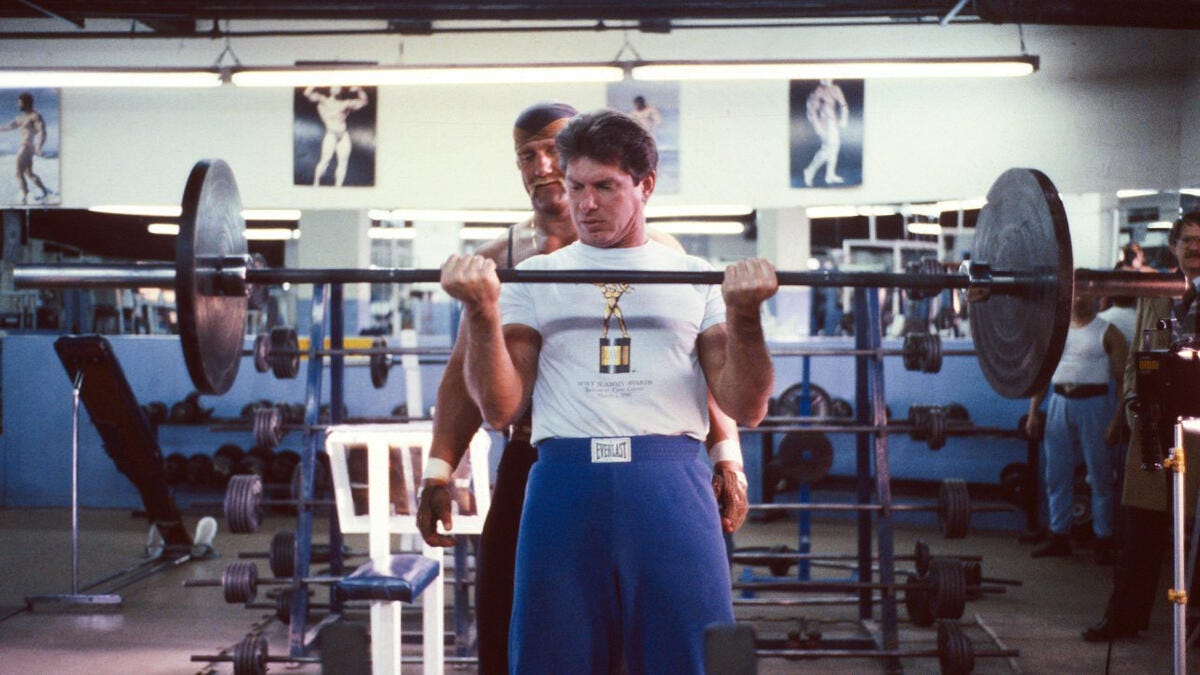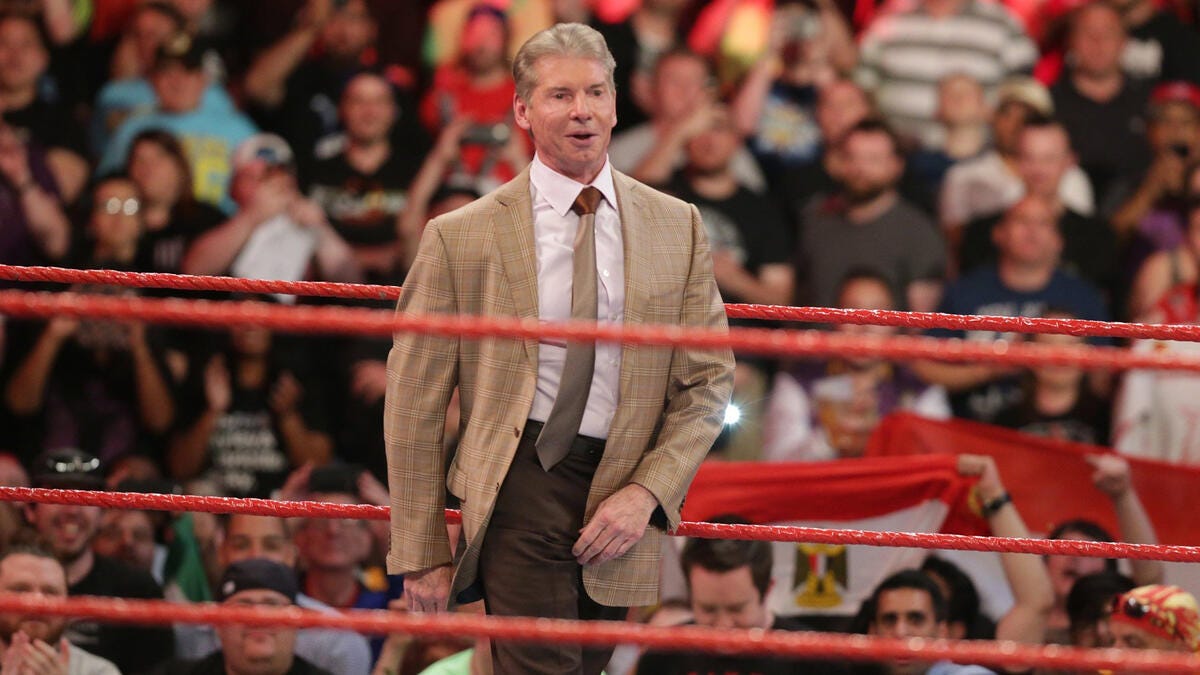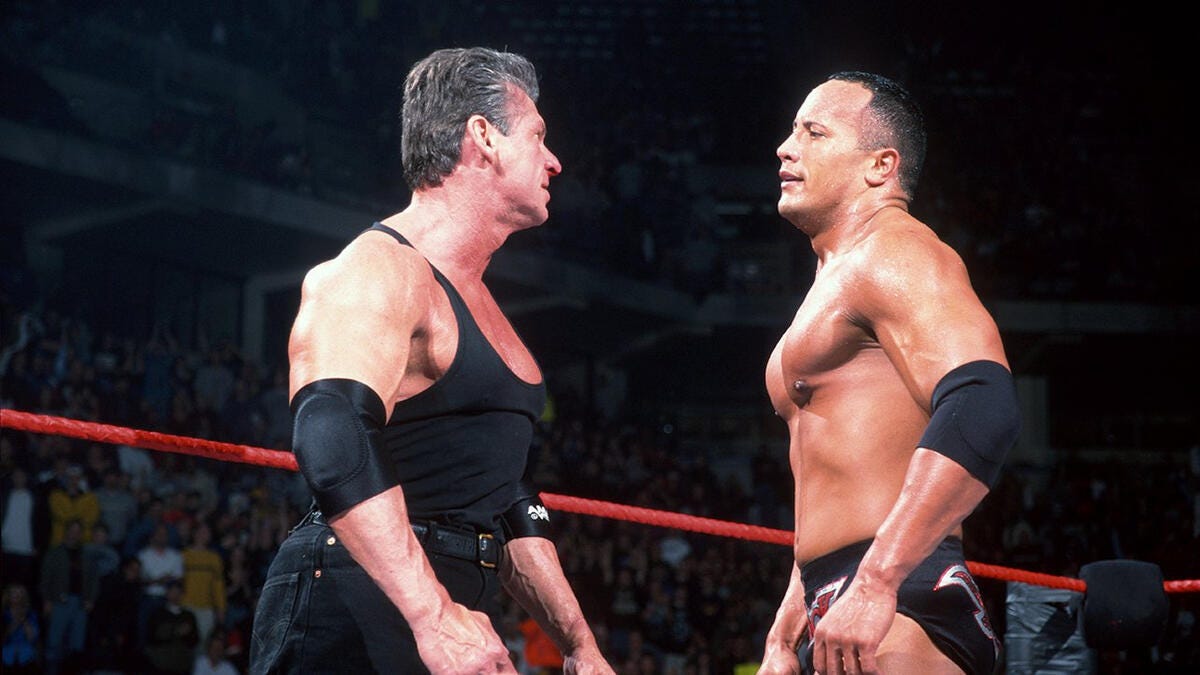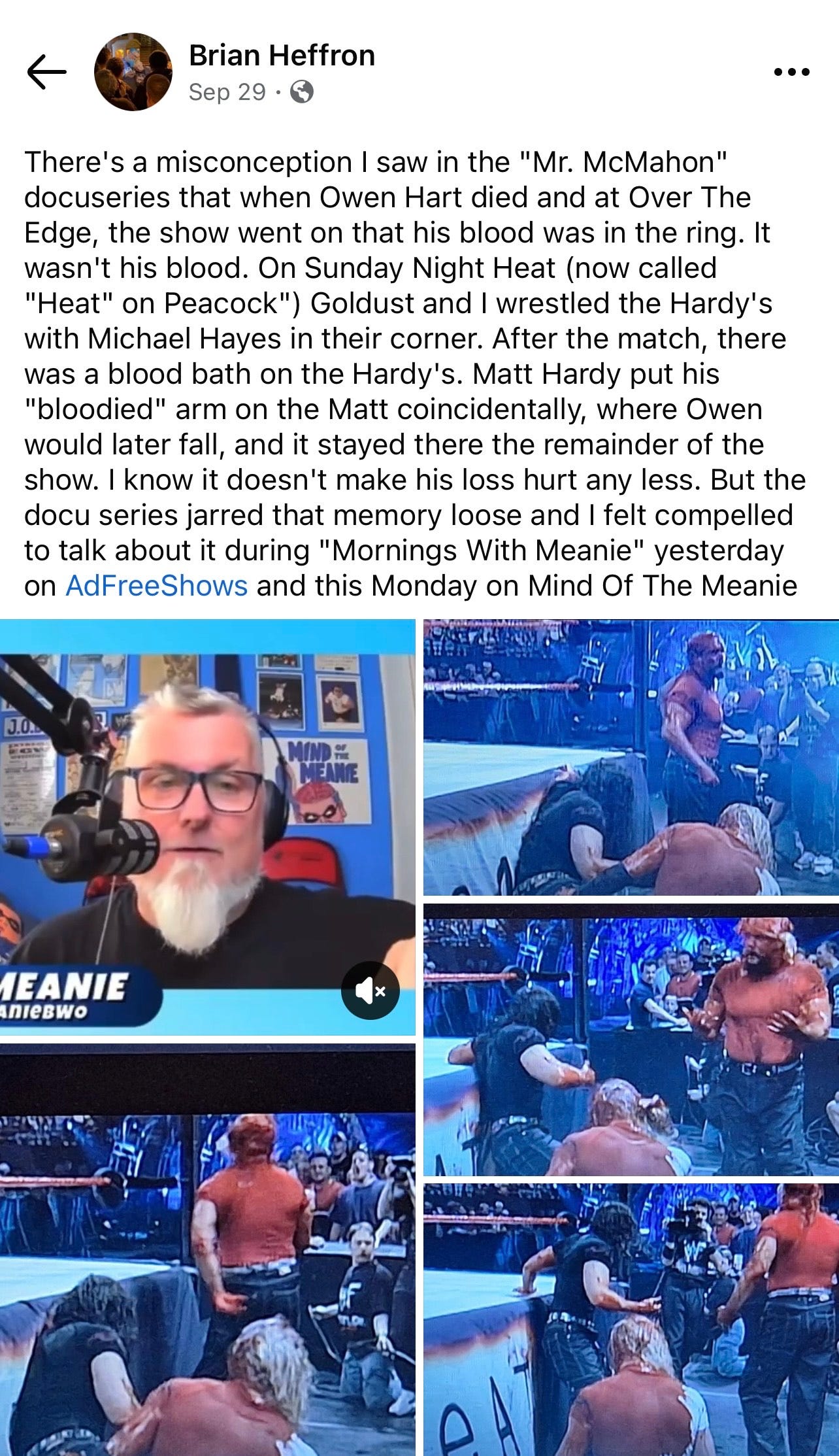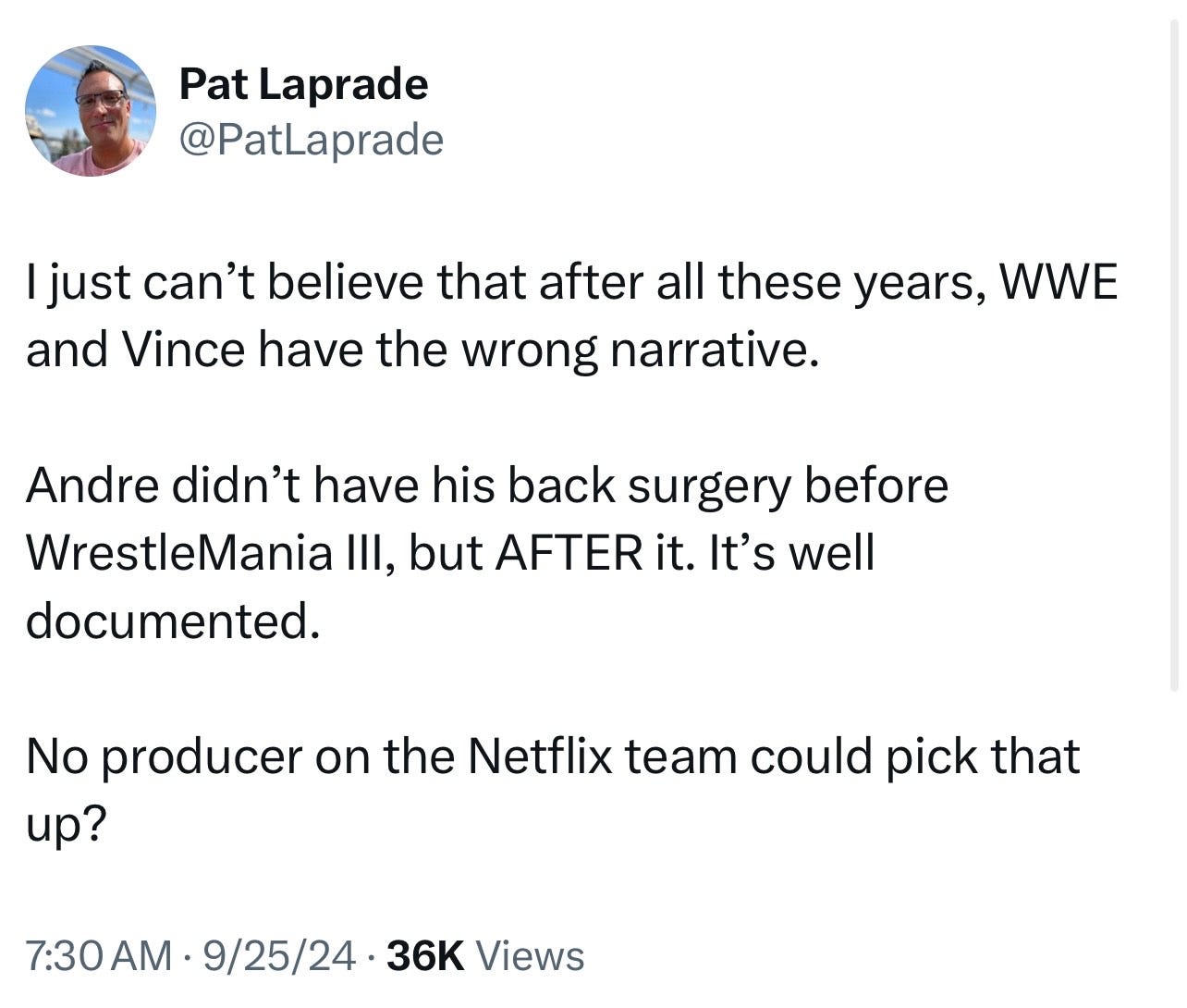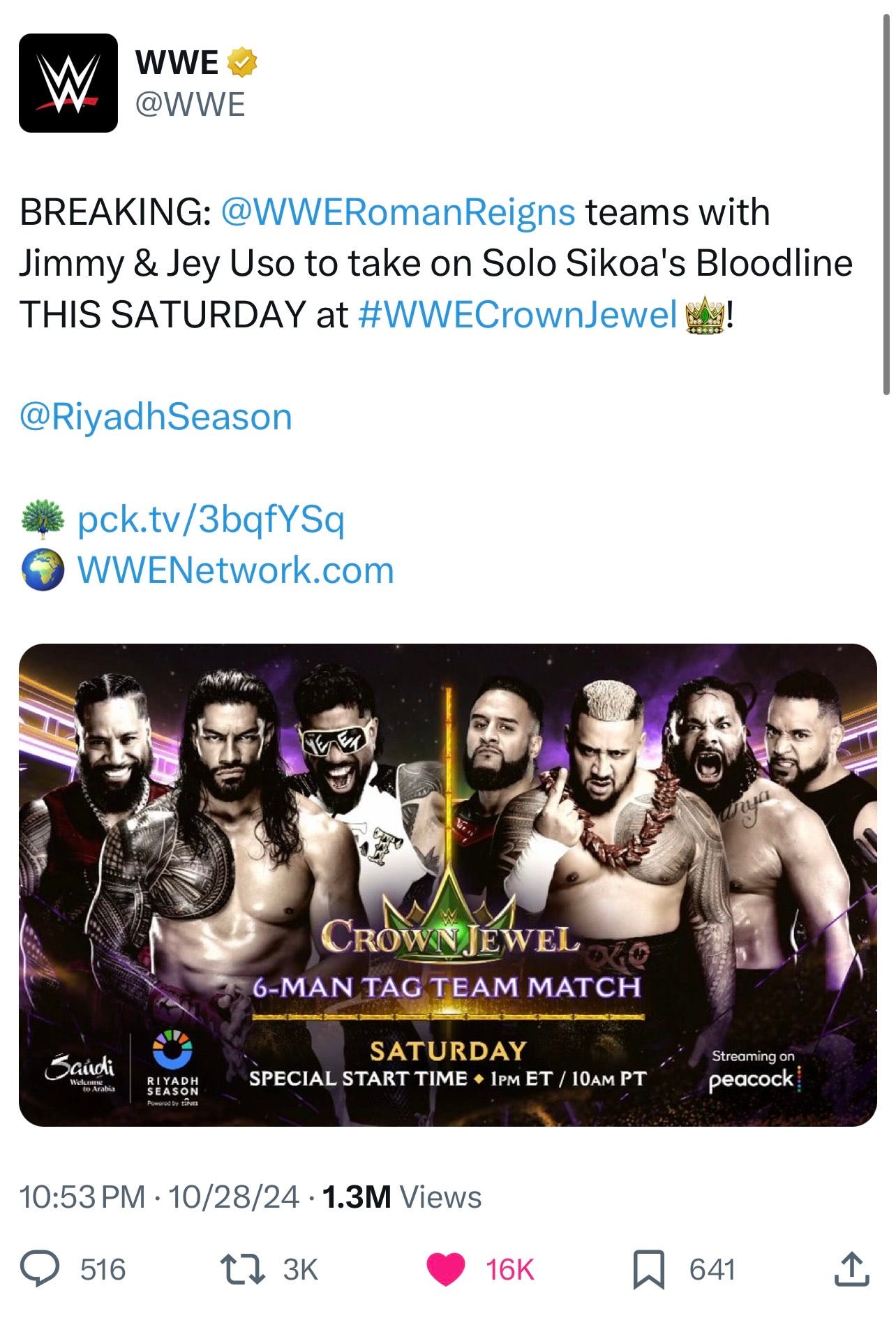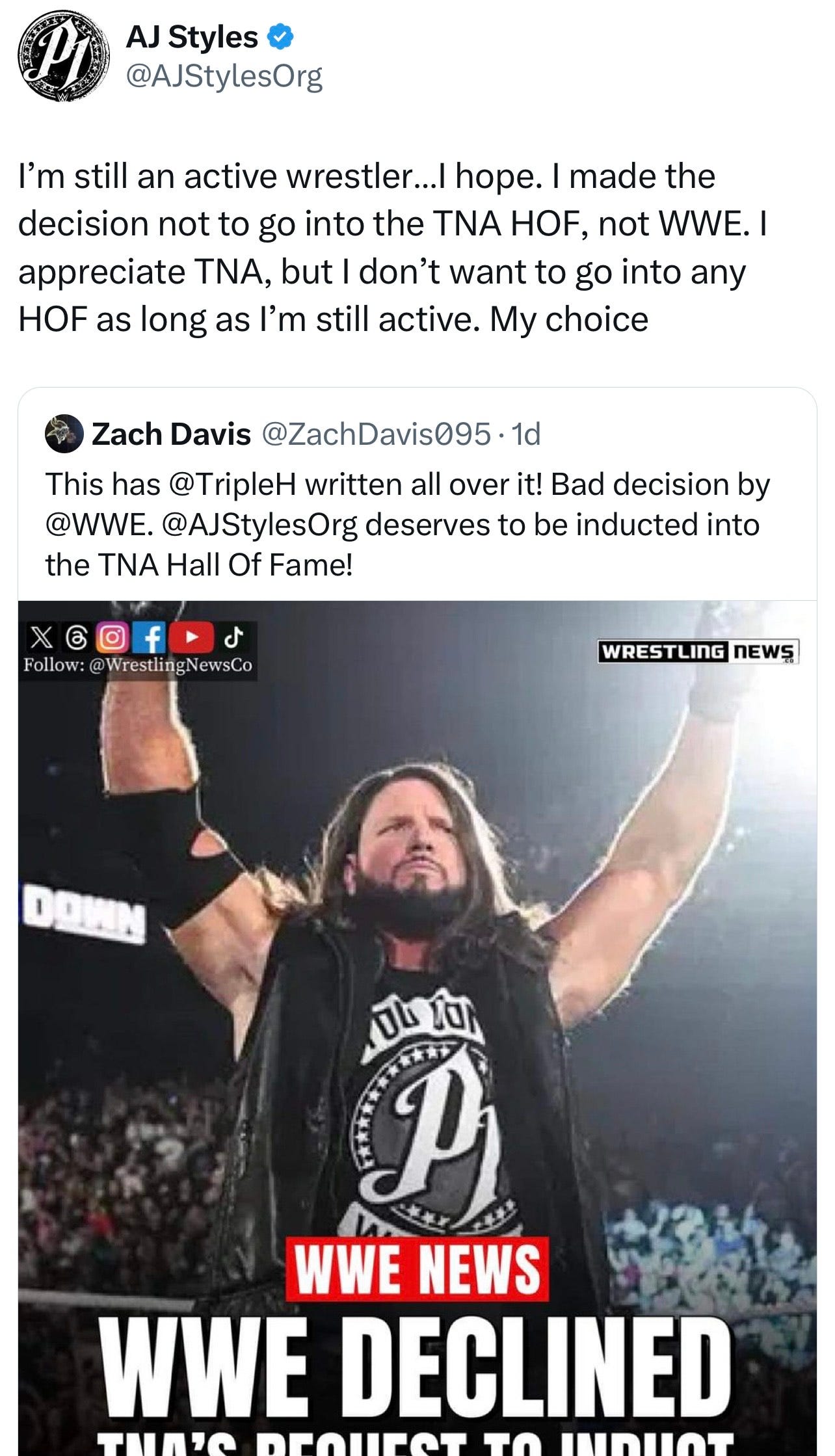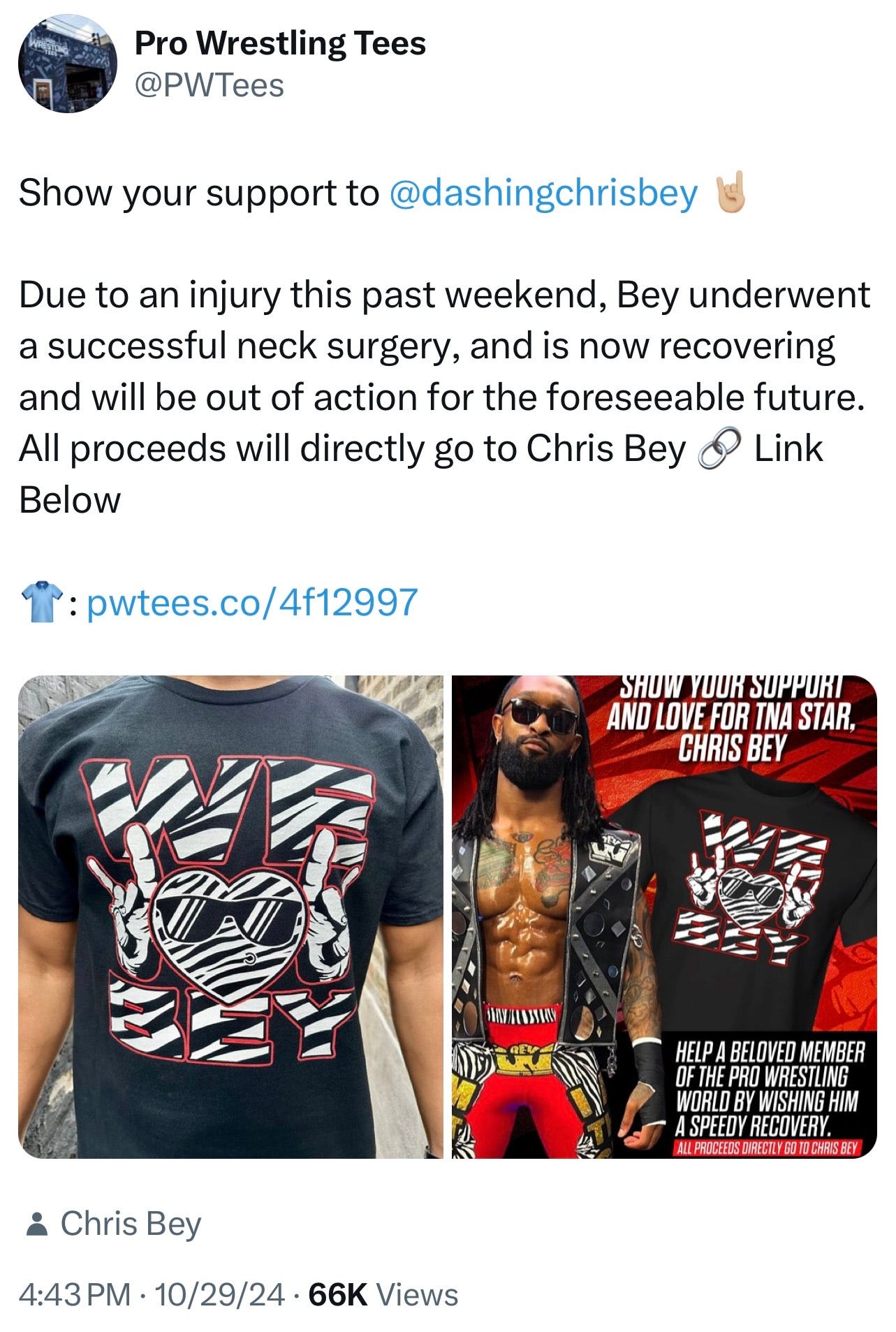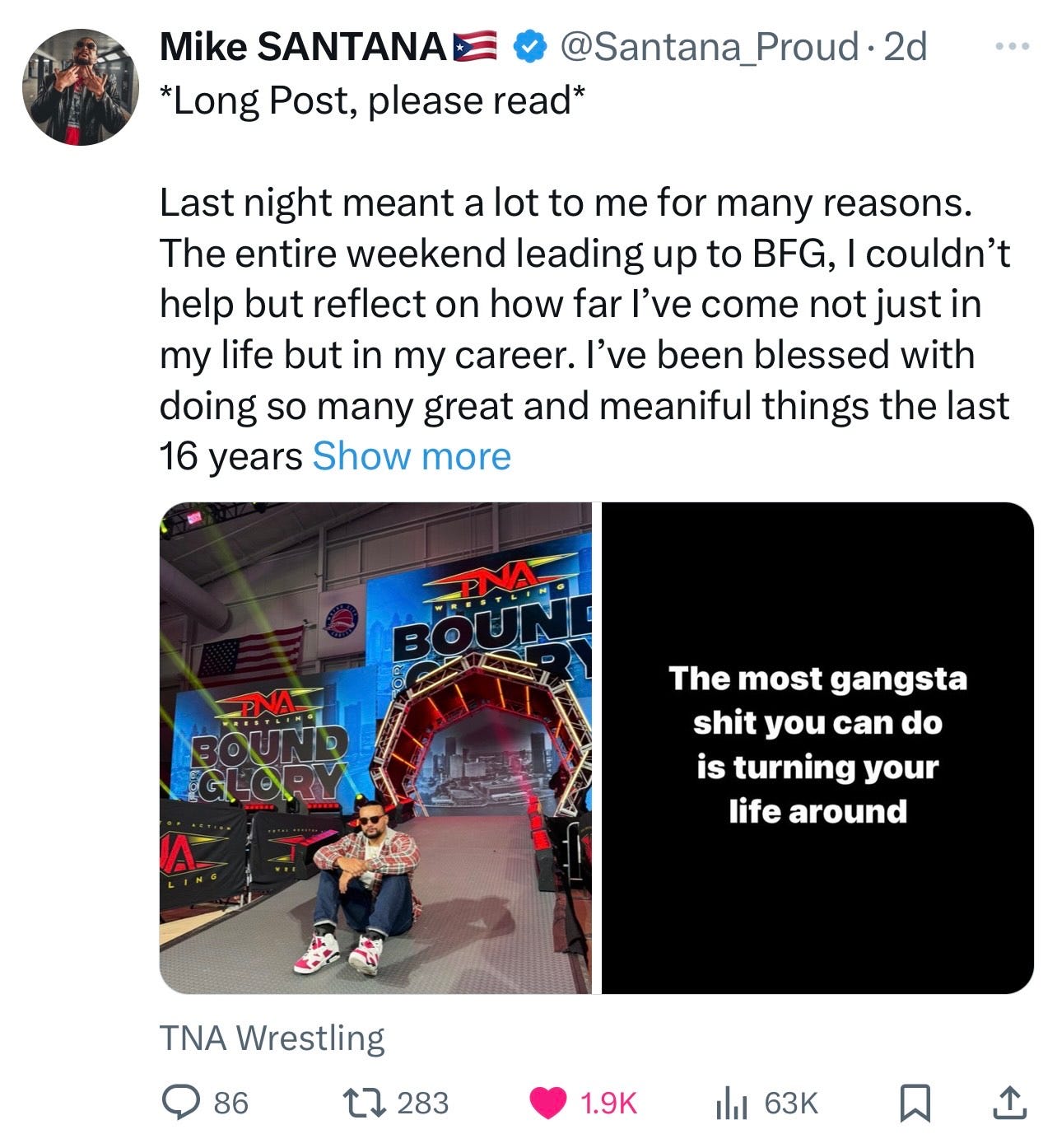The ‘Mr. McMahon’ documentary was telling about Vince–and WWE
Top takeaways from the “Mr. McMahon” documentary on Netflix
The Week in Wrestling is published every week and provides beneath the surface coverage of the business of pro wrestling.
Top five takeaways from the “Mr. McMahon” documentary on Netflix
Vince McMahon is back in the news.
Last week, a new lawsuit accused McMahon, his wife Linda, WWE, and parent company TKO Holdings of allowing the “open, rampant abuse” of ring boys as young as 12 who helped assist ringside announcer Mel Phillips in the 1980s and 1990s.
Yesterday, an entirely different story circulated. The extremely talented Mike Johnson of PWInsider broke the news that McMahon is in the early stages of launching a new entertainment company. Nothing will materialize until McMahon’s federal indictment is resolved. Even though it is a significant long shot, it will be fascinating to see who milks McMahon for a salary–and worth following, if only to see McMahon’s ego run rampant with this inane project.
The whole situation made me think of the Mr. McMahon documentary on Netflix, which was released on September 25–and still worth revisiting.
McMahon, as long as he is alive, will always be relevant in the pro wrestling space. The six-part miniseries focused on McMahon providing insight into his life and career, until it couldn’t–or more appropriately, wouldn’t. When a flurry of sexual abuse allegations were levied at McMahon, the former end-all, be-all of WWE canceled his remaining interviews with Netflix.
I found the most eye-opening parts of the series to be the entities around McMahon, specifically with how they were presented. That began with Netflix, a billion-dollar corporation. Netflix is married to WWE for the next 10 years in a business partnership, so however the Vince doc unfolded, WWE needed to look positive regardless of how its former CEO was presented.
That is complicated, however, because McMahon and WWE are inextricably intertwined. As I share my five top takeaways from the Vince doc, that is where we begin.
1.) Where was Nick Khan?
Nick Khan is the new omnipotent figure in WWE.
With every business dealing and each new acquisition, a hefty piece of praise is directed toward Khan. Yet the new face of WWE was a silent partner in this Netflix series, with no appearance in the six-hour documentary–or even a mention.
This couldn’t have happened by accident. Khan wants in no way, shape, or form to be associated with McMahon. Given the deluge of negativity surrounding Vince, you can’t blame him. But that doesn’t mean the Netflix team couldn’t have pursued that angle. And that is why the connection between WWE and Netflix–where a 10-year deal begins this January–is so vital.
Revealing information on McMahon was fair game. Yet, based on the finished product, Khan–and by extension WWE–were off-limits.
2.) Only Triple H the wrestler, and not Paul Levesque the executive, was involved in the documentary
Beginning with Episode One, Paul “Triple H” Levesque was on camera throughout the documentary.
Levesque provided his insight on wrestling for Vince’s company. Missing, however, was Levesque’s perspective on working beside Vince for years as an executive.
A compelling argument could be made that Levesque knows Vince as well as anyone he ever worked with, if not better. So… where are the behind-the-scenes stories? If you were looking for details about the constant headaches regarding Vince’s stubbornness, a feel for what it was like to see Vince operate at all hours on his personal jet or with friends/foes during their trips to Saudi Arabia, or the strokes of brilliance when it came to certain storylines, don’t hold your breath.
None of that was covered.
By Episode Six, there were brief mentions of Levesque acquiring power in WWE. But it was either used to juxtapose Shane McMahon’s lack of stroke in the company or highlight how, even though Levesque was Vince’s number-two, there was no chance in hell Vince would ever retire.
There was a clear separation between McMahon and WWE throughout the series, and this was another prime example of it.
3.) The documentary series needed… more Vince McMahon
One area that the documentary series captured perfectly was Vince’s relationship with Shane, his only son. Shane revealed personal memories, and he came off looking phenomenal. Painfully honest, the doc showed a whole new side of the Vince-Shane dynamic.
But it didn’t go much deeper. There was very little insight from Linda McMahon, other than how she and Vince met, and absolutely no talk of their current relationship. Based on the documentary, it appeared Vince and Linda were still together. Is that true? Could it be the furthest thing from the truth?
Six years ago, when Vince relaunched XFL, I was on the publicity conference call. I asked Vince a question about whether he ran the idea of restarting the XFL by Linda, considering his wife had some connective tissue to football–decades prior, when she worked at the Covington and Burling law firm, one of their clients was football legend Vince Lombardi. I mentioned to Vince that, although he gets the lion’s share of credit, Linda was always an integral part of his success–and asked if he sought out her opinion on this matter.
Vince wasn’t thrilled with my line of questioning. Very curtly, he said that no, Linda wasn’t involved. He offered nothing else about her.
Immediately, my phone blew up. People from WWE–former on-air talent, others whose work takes place behind the curtain–were playfully giving me a hard time, saying that Vince would never entertain questions about Linda. But that’s why you ask–you never know how it is going to be answered.
The Vince doc was missing substance in many instances, especially when it came to his marriage with Linda. His relationship with Stephanie was not presented nearly as well as it was with Shane, and again, the doc stayed as far as possible from adding substance to the Vince-Levesque relationship. No resolution was offered regarding Vince and any of his current relationships–Shane, Stephanie, Levesque, or the roster–after all of the new allegations levied at him.
There was insight into Vince’s relationship with his father, which was a reminder that this doc was more about Vince and less about WWE.
4.) There were mistakes
In “My Way”, Frank Sinatra sings, “Regrets, I have a few.”
Don’t we all?
Yet there were a few inaccuracies in the Vince doc that would have been easy to correct.
For starters, there was Owen Hart’s tragic death. Throughout Episode Four, there was discussion about Owen’s fall at the Over The Edge pay-per-view in May of 1999–including how Owen’s blood was in the ring. Brian Heffron, who is best known in wrestling as The Blue Meanie, took to social media to explain that the blood in the ring was from the pre-show.
Somehow, there was no mention of Bret Hart having a contract that allowed him creative control in his last 30 days with WWE. That is a game-changer when it comes to the 1997 Survivor Series, as Hart did not have to lose, no matter what Vince said–all because of a clause in his contract Vince gave him. How is that detail omitted?
Another error was at the expense of Andre The Giant. As the talented author Pat Laprade (his book on Andre is phenomenal) noted, Andre had his back surgery after WrestleMania III, not before it.
I also thought it was a mistake not to include the likes of Jim Ross, Chris Jericho, and Paul Wight in the documentary, regardless of the fact they work for rival AEW. But again, by not highlighting a competitor, it emphasized the importance of making sure WWE looked strong.
5.) This wasn’t for the season ticket holders
Wrestling fans were going to watch. There was no doubt about that whatsoever.
The goal was to make Mr. McMahon a compelling story for all viewers. Some of the insider details were bypassed because of that, as the goal was to connect with the masses.
To Netflix’s credit, that goal was accomplished. It generated 4.9 million views in the first week alone. There were more than enough nuggets and previously undisclosed topics to make this a worthwhile view, but the objective was to connect with the audience at-large.
And wrestling fans? No matter what, the season ticket holders–that’s us, the ones who follow the product every week–are bound to keep watching.
This past week…
… It’s odd that this wasn’t announced on Raw, instead getting released shortly before 11pm ET on Monday, but Roman Reigns is back in action at Crown Jewel this Saturday in a six-man with The Usos against the new Bloodline.
… The Bloodline story was front and center last Friday on SmackDown, as the Motor City Machine Guns defeated Tama Tonga and Tanga Loa for the tag titles. That removes the last pieces of gold (Jey Uso lost the IC title to Bron Breakker only days prior following interference from Solo Sikoa and Jacob Fatu) from The Bloodline feud, and while that angle has been built tremendously well, we’ll see how it goes for MCMG’s Chris Sabin and Alex Shelley as champs. Winning the titles in only two weeks doesn’t exactly represent a struggle, where MCMG’s whole time together over the last two decades has been about overcoming the odds.
WWE’s new program on the indies is going to be extremely fascinating.
… Sami Zayn was also reintroduced to The Bloodline story on Raw, where it was hinted his allegiance will be with Solo Sikoa. Does anyone believe that will happen?
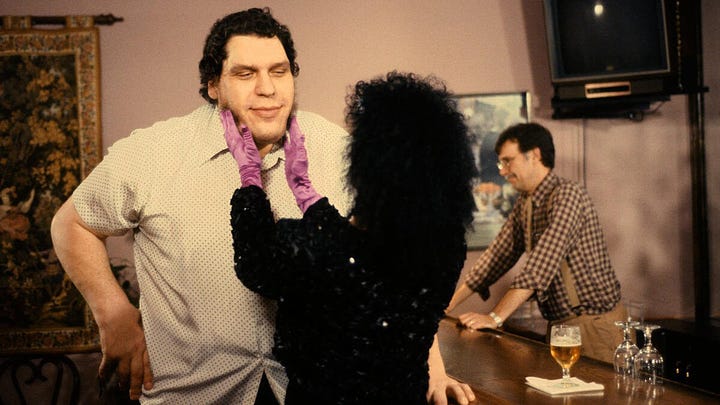
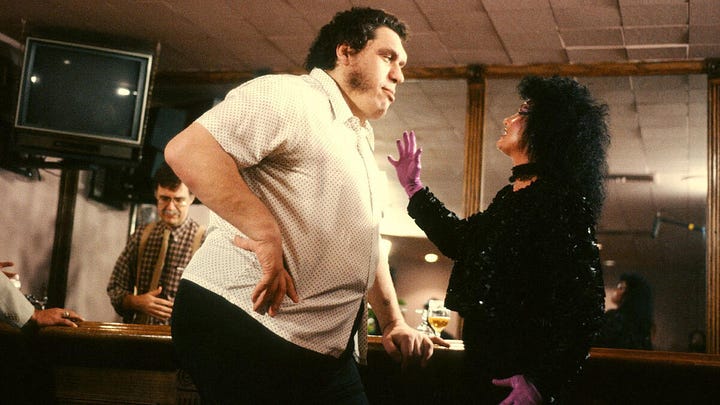

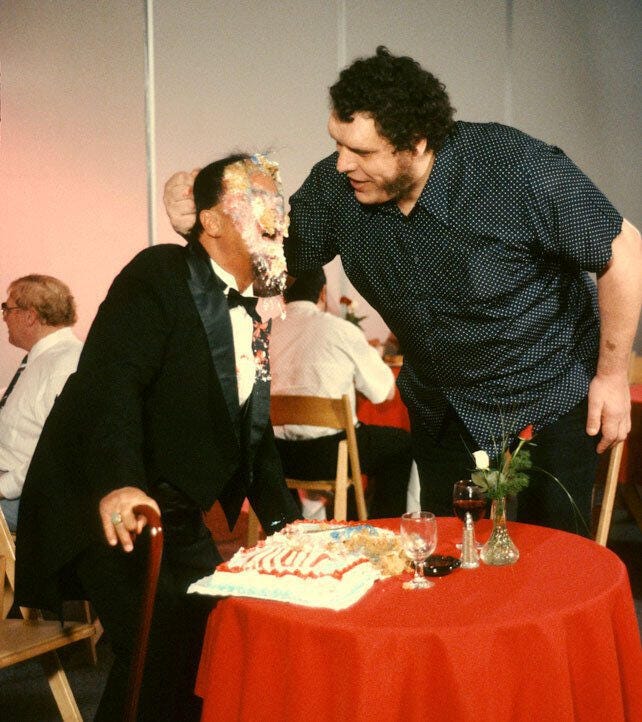
… Chris Owens is one of pro wrestling’s most renowned authorities on Andre The Giant, dedicating decades to preserving the legacy of Andre and ensuring his memory lives on. Following this Monday’s Andre story on Undisputed, Owens shared his expertise regarding what could have been for Andre in WWE in ’91 and ’92–and how Vince McMahon factored into that.
“Andre’s relationship with Vince Sr. was always much stronger than the one he had with his son,” said Owens. “It has been said that their relationship was further affected when Vince Jr. made the decision not to allow Andre to compete in Japan post-1986 and solely work for his WWF promotion. Unfortunately, Andre’s health would not allow him to compete effectively in singles competition after 1989.
“It is my belief that after his run with Haku as the Colossal Connection, Vince did not have plans for in-ring work for the Giant, but rather an outside role that could still be a part of the major storylines. While working in Japan, for Baba, his work in the ring diminished greatly from 1991 to 1992… with his last few tours relegated to six-man tag matches with minimal bumping in the ring.
“In recent years, The Undertaker has told the story of Andre mentioning to him that he had ‘a plan with him’ but would never unveil it to him. It is my belief that Andre saw himself entering one last Royal Rumble, in 1992, and allowing The Deadman to eliminate him, effectively passing the final torch that he could offer to the younger wrestler. It could have been a highlight that would have strengthened Mark Calaway’s character at the time.
“I asked Tim White about this scenario shortly before he passed. He said, ‘I guess we will never know’ with a smile, but I’ll always remember him putting a hand on my shoulder as he finished with this line to me: ‘I can tell you one thing for sure that Andre liked and respected Mark and he truly turned that locker room leadership role over to him.’”
… AJ Styles set the record straight on why he was not inducted into the TNA Hall of Fame.
… Samantha Irvin revealed new information on why she departed WWE, explaining that she had goals beyond ring announcing.
… Best wishes to Chris Bey, who was stretchered out of the ring in a neck brace at last weekend’s TNA tapings.
TNA makes disastrous decision in world title bout
Every time TNA builds goodwill, the promotion has a knack for ruining it.
That was on full display this past Saturday at Bound for Glory, TNA’s signature show.
It appeared it was finally time for Joe Hendry to win the TNA title. But as soon as his match against current champion Nic Nemeth (who we’ll always know best as Dolph Ziggler) was announced as the co-main event, you knew some sort of chicanery was afoot. TNA wasn’t going to crown a new champ in the penultimate match of a pay-per-view, and with a three-way Full Metal Mayhem tag title match (TNA’s twist on TLC) starring the Hardys closing the show, it became abundantly clear that the evening’s big title change was going to take place in the main event.
So why even put Hendry in that spot against Nemeth? No matter how the match finished, both were bound to lose. That is what happened, as both Hendry and Nemeth wrestled a good-but-not-great match that ended following outside interference from JBL.
Yes, that JBL.
You have to wonder what the decision-makers in TNA were thinking would happen. The reaction to JBL was mostly apathetic, as absolutely no one wanted to see him in that spot.
Compare this with NXT’s use of Bully Ray–who starred in WWE as Bubba Dudley–in his showing at NXT’s Halloween Havoc on Sunday. Bubba showed up after the main event, and his appearance builds directly to NXT’s upcoming show at the old ECW Arena on November 6.
Unlike in TNA, the cameo was not centered around the world title bout of its top yearly show.
Hendry is currently starring in TNA and NXT. He continues to reach new levels of popularity, in spite of TNA’s hesitation to run with him, and he deserved better at Bound for Glory. He should have ended the show by winning TNA gold.
Tweet of the Week
Mike Santana bet on himself, and he has found a home in TNA.




